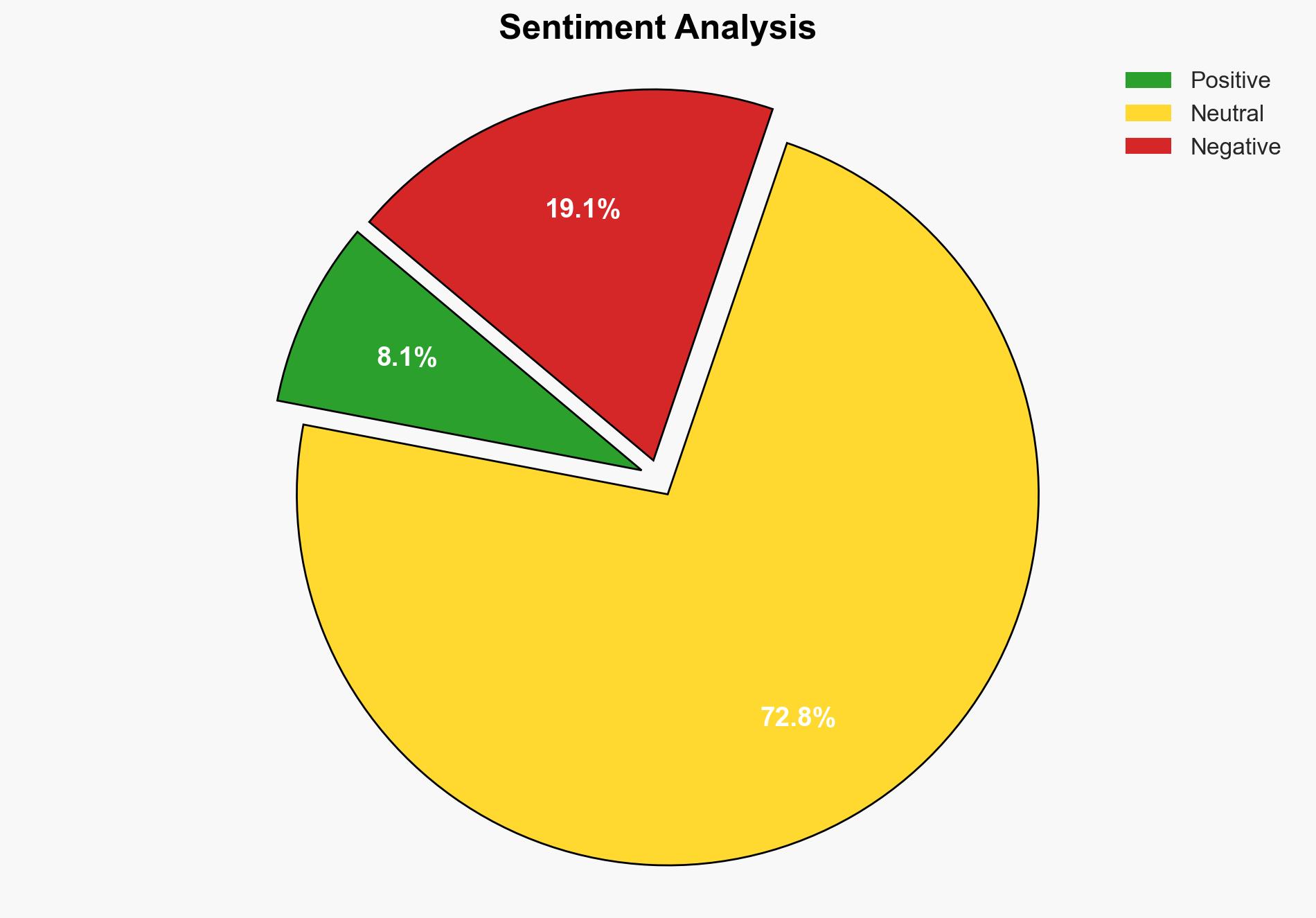North Korea unveils nuclear-powered submarine for first time – Japan Today
Published on: 2025-03-08
Intelligence Report: North Korea unveils nuclear-powered submarine for first time – Japan Today
1. BLUF (Bottom Line Up Front)
North Korea has unveiled its first nuclear-powered submarine, marking a significant advancement in its military capabilities. This development poses a major security threat to regional stability, particularly to South Korea and neighboring countries. The submarine is reportedly capable of carrying nuclear-capable weapons, enhancing North Korea’s strategic deterrence. Immediate attention and strategic countermeasures are recommended to address this evolving threat.
2. Detailed Analysis
The following structured analytic techniques have been applied for this analysis:
SWOT Analysis
Strengths: North Korea’s advancement in military technology with the development of a nuclear-powered submarine enhances its strategic deterrence capabilities.
Weaknesses: North Korea’s economic constraints and heavy international sanctions may limit further technological advancements and maintenance.
Opportunities: Potential for North Korea to leverage this development in diplomatic negotiations.
Threats: Increased regional tensions and potential arms race in East Asia.
Cross-Impact Matrix
The unveiling of the submarine may lead to increased military readiness and potential escalations in South Korea and Japan. It could also influence China’s and Russia’s strategic postures in the region.
Scenario Generation
Scenario 1: North Korea continues to develop its naval capabilities, leading to heightened regional tensions and increased military presence by neighboring countries.
Scenario 2: Diplomatic engagements lead to a de-escalation of tensions, with North Korea leveraging its new capabilities for negotiations.
Scenario 3: Technological or operational failures limit the effectiveness of the submarine, reducing its strategic impact.
3. Implications and Strategic Risks
The introduction of a nuclear-powered submarine by North Korea poses significant risks to regional security and stability. It could trigger an arms race and increase the likelihood of military confrontations. Economic interests in the region may also be affected due to increased geopolitical tensions.
4. Recommendations and Outlook
Recommendations:
- Enhance regional surveillance and intelligence-sharing mechanisms to monitor North Korea’s naval activities.
- Strengthen diplomatic efforts to engage North Korea in dialogue and reduce military tensions.
- Consider technological investments in anti-submarine warfare capabilities to counter potential threats.
Outlook:
Best-case scenario: Diplomatic engagements lead to de-escalation and potential arms control agreements.
Worst-case scenario: An arms race ensues, with increased military confrontations and regional instability.
Most likely scenario: Continued tensions with periodic diplomatic engagements, maintaining a fragile status quo.
5. Key Individuals and Entities
The report mentions significant individuals such as Kim Jong Un and Moon Keun Sik, as well as entities like the Korean Central News Agency (KCNA). These individuals and entities play crucial roles in the unfolding developments.





